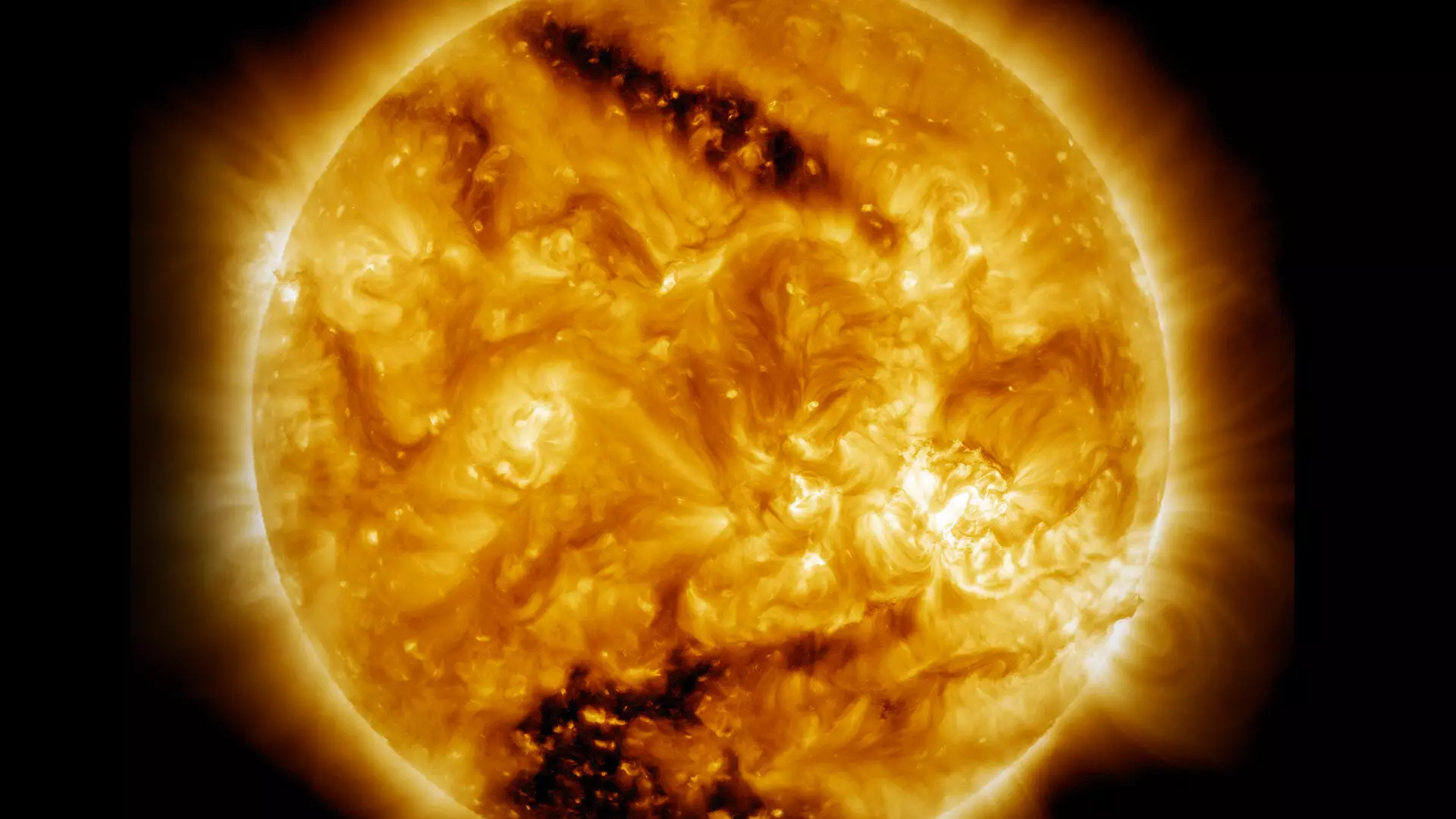The sun, our nearest star, has always captivated scientists and enthusiasts alike with its seemingly paradoxical behaviors. One of the most enduring mysteries relates to the sun’s surface and its outer atmosphere, or corona. While the sun’s surface reaches a scorching 10,000 degrees Fahrenheit, astonishingly, the corona soars to a blistering 2 million degrees—nearly 200 times hotter. This counterintuitive phenomenon has baffled researchers since it was first identified in 1939, prompting numerous attempts to unravel the underlying mechanics behind such extreme temperatures. Recent breakthroughs, particularly from a study spearheaded by Sayak Bose and colleagues at the Princeton Plasma Physics Laboratory, have propelled our understanding forward, posing exciting new possibilities regarding the sun’s atmospheric dynamics.
The disparity in temperature between the sun’s surface and its corona is not merely an academic curiosity; it challenges existing models of stellar physics and hints at deeper mechanisms at play. This temperature gradient implies that something significant is happening beyond the sun’s surface, which may have broader implications for our understanding of solar winds and cosmic weather. The coronal holes, which are characterized by low-density regions and open magnetic fields stretching into space, have often puzzled scientists, who have noted their high temperatures without a clear understanding of the heating process. This information gap not only raises questions about our sun but could also affect models of other stars and their atmospheres.
Bose and his team have taken a significant step in providing answers by investigating the role of Alfvén waves—fluctuations in plasma driven by magnetic fields. Groundbreaking research has shown that these waves may be reflected within coronal holes, contributing to the region’s enigmatic heating. This revelation not only marks a step closer to understanding the corona’s dynamics but also highlights the intricate interplay between magnetic fields and plasma, an area of astrophysics that deserves further exploration.
The investigation team utilized a state-of-the-art plasma column at the University of California-Los Angeles to simulate conditions akin to those found around coronal holes, exciting Alfvén waves in the process. Their experiments revealed that when these waves encounter regions of variable density and magnetic field intensity—a common feature in the solar atmosphere—they can reflect and re-travel towards their source. This unique interaction fosters turbulence, generating the excess heat observed in coronal holes.
This experimental validation is pivotal. For many years, scientists have hypothesized about the phenomenon of Alfvén wave reflection, yet evidence substantiating it had remained elusive. Jason TenBarge, a research scholar involved in the project, emphasized the significance of this work, noting that it not only confirms the reflection of Alfvén waves in experimental settings but also establishes that the energy reflected is substantive enough to account for the heating observed in coronal holes. This finding is a significant leap ahead in solar physics.
Additionally, the team incorporated computer simulations to complement their laboratory observations, enhancing the credibility of their findings. This dual approach—integrating theoretical modeling with hands-on experimentation—exemplifies a robust scientific methodology that has become increasingly essential in contemporary studies. Acknowledging the complexity of Alfvén wave physics, Bose remarked on the intriguing nature of how basic laboratory results can elucidate natural astronomical phenomena.
The collaboration among esteemed institutions such as Princeton University, UCLA, and Columbia University underscores the collective endeavor to demystify these profound cosmic mysteries. By consolidating interdisciplinary expertise, scientists are better poised to tackle the long-standing questions regarding solar mechanics that not only enrich our understanding of the sun but also contribute to the broader field of astrophysics.
Looking Towards the Future: Implications and Perspectives
As we move forward, these findings not only add a layer of complexity to our understanding of the sun but serve as a catalyst for further research into stellar atmospheres. It raises new questions about the potential impacts on solar activity, space weather, and how they influence terrestrial systems. By continuing to investigate the sun’s behaviors through innovative experimental designs and computational techniques, scientists can shed light on other cosmic phenomena, bridging the gap between theory and observable reality.
The study of the solar corona’s enigmatic heating mechanisms presents an exciting frontier in astrophysics. The insights from Bose and his team lay the groundwork for future explorations into the sun’s complex dynamics. As we strive to decode these mysteries, we inch closer to a more holistic understanding of our sun and the intricate universe it inhabits.



Leave a Reply